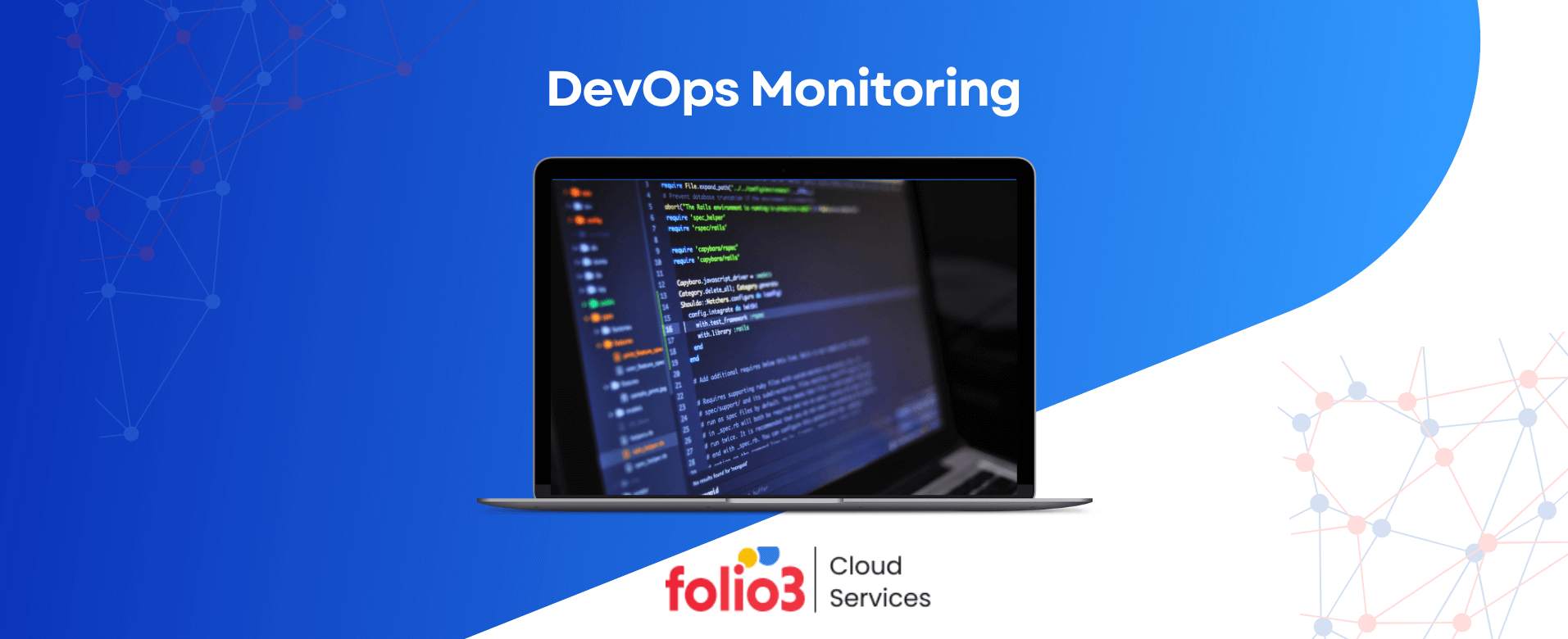Infrastructure as Code (IaC) is how infrastructure agreements and accumulation are done in today’s information technology (IT) world.
IaC generally transforms manual infrastructure management processes into programming-based configurations, thus providing perfect settings for automated instruments, scalability, and consistency.
IaC (Infrastructure as Code) can be considered the file creation setting the baseline of the details of the infrastructure components. These files function as predefined installations and configuration plans for smooth and repeatable provisioning for applications, infrastructure networks, and storage.
By creating a collection of predefined infrastructures, IaC improves and simplifies the deployment process and extends appropriate configuration management procedures and documentation creation.
Version control consolidates the power of IaC—it allows configuration files to be tracked and managed like any other software code source.
Thus, teams can come together and work without delays, track version changes, and return to an earlier program stage if necessary. Moreover, IaC is a suitable platform for creating modular infrastructure components, thus enabling greater flexibility and reusability among sophisticated systems.
In this way, IaC minimizes the developers’ labor, exempts them from the tedious and error-intensive manual configuration process, and automates the infrastructure provisioning process.
Therefore, the framework provides predefined templates and automates the deployment pipelines, enabling developers to quickly create and expand infrastructure resources to match application requirements during the development and deployment stages.
What is Infrastructure as Code?
Infrastructure as Code (IaC) stands out as the next-generation process for governing and setting up computing infrastructure. It operates as a substitution for manual configuration and procedures, with code managing them instead of manual configuration and procedures.
In classically organized IT environments, provisioning and managing infrastructure elements such as servers, databases, and storage is often tiresome and error-prone because of repetitive manual processes.
Nevertheless, with IaC, these processes are streamlined through code that enables developers to treat their environment as software and thus build, deploy, and manage resources faster and more efficiently.
IaC can be divided into two essential components: declarative code, which defines the state of the infrastructure, and imperative code, which manually outlines all steps involved in that state.
Leveraging the templates, IaC builds uniformly, eliminates human error, and automates application infrastructures. The manual effort is saved, and developers can concentrate on application development and advanced features.
Through these, organizations will realize various advantages, such as decreased time and money spent managing infrastructure and improved consistency across environments.
IaC also contributes to the scalability and agility of enterprises since they can shape their devices according to new business requirements. Moreover, they can act swiftly in case of fluctuations in market dynamics.
Cloud-based automation of infrastructure provisioning with code substantially shifts how infrastructure is managed and deployed.
So, if you are wondering what the automation testing process is, it transitions to more agile, trustworthy, and efficient operations on the IT side, which is helpful in the digital era.
This transformative approach not only streamlines provisioning processes but also paves the way for enhanced automation testing processes.

Streamline operations! Explore how Infrastructure as Code can boost your efficiency.
Automate and streamline with Infrastructure as Code. Reduce deployment times, cut costs, and maintain consistency. Learn how our solutions boost efficiency.
How does Infrastructure as Code work?
As its name suggests, Infrastructure as Code (IaC) approaches infrastructure configuration as code (similar to the software code used to describe an app and its respective features).
A configuration file codes the IaC’s system architecture and parts, such as one server, network configurations, operating systems, and storage.
The configuration files below, written in languages like Python or Java, tell IaC about the desired state of the infrastructure. The IaaS tools already have the I; provisioning and managing these virtualized resources would depend on the files.
This approach, consequently, allows software engineers to manage the environment despite the heterogeneous infrastructure in an orderly, code-based, and repeatable way. Thus, the environment relay is preserved.
Approaches to IaC
Two primary approaches to implementing IaC are narrating and directing the audience. Both methods, when used together or individually, provide advantages and drawbacks and are suitable based on the target infrastructure complexities and the particular requisites of the deployment.
A feature of IaC is that it automates and streamlines the control of the organization’s infrastructure; this contributes to the advanced efficiency, scalability, and reliability of an IT infrastructure.
Declarative IaC
The declarative IaC focuses on describing the final state of an infrastructure. Developers specify the system’s details regarding the required resources and settings, and the IaC tool combines the configuration to create what is needed.
This approach saves the hassle of configuring, as defining what the team wants will be enough.
Implicit IaC
In contrast, Implicit IaC involves listing every action necessary to configure the infrastructure to the desired system condition.
This technique is straightforward and intellectual and requires programmers to describe all the features and their sequences. Determining the criticality of events plays a vital role in rigorous IaC and is pivotal for complex deployments.
Role of IaC in DevOps
IaC is crucial in achieving DevOps objectives through automated, collaborative, and rapid software development processes.
DevOps emphasizes unifying development (Dev) and operations (Ops) teams to reduce process time and expedite software product delivery.
At the core of IaC, Development and Operations teams can deal with Infrastructure resources in a code-based manner, which brings automation and robustness to IaC.
With all infrastructure configurations treated as code, DevOps engineers use version control, testing, and deployment pipeline mechanisms to automate the deployment and configuration of infrastructure stack elements.
The critical role of IaC in DevOps includes:
1) Automating Infrastructure Provisioning
IaC is an area of DevOps that automates the deployment of devices for infrastructure resources, including servers, network resources, and storage.
Teams can set up and take down environments two times faster than before to manage the environments with low human intervention and fewer errors because engineers can use code to define the infrastructure configuration.
2) Ensuring Consistency and Reproducibility
The Infrastructure as Code (IaC) enables infrastructure configurations in a coded format and is versioned, which ensures consistency and reproducibility across various environments, staging, and production varieties.
These are the sources of minimizing configuration drift and the risk of inconsistencies due to situations with different environments.
3) Integrating with CI/CD Pipelines
IaC works perfectly with CI/CD pipelines, such that infrastructure modifications detected to be triggered can be simultaneously deployed to application code. This tight coupling grounds and steps up the software delivery processes, allowing release cycles with confidence.
4) Scaling Infrastructure Effortlessly
DevOps allows teams to expedite scaling infrastructure resources to higher or lower levels depending on demand.
By continuously reviewing infrastructure settings through code, organizations can exploit resources and write scalable code that will allow them to respond quickly to ever-changing workloads and requirements.
5) Fostering Collaboration and Transparency
IaC is a common language for development and operations teams. It facilitates collaboration and transparency between these teams throughout the software delivery life cycle and provides excellent communication between developers and ops.
Textual changes in the infrastructure configuration are visible, identifiable, and open for discussion, allowing teams to discover common ground and stay on the same page.
Benefits of Infrastructure as Code
IaC, or Infrastructure as Code, automates building computing environments or the whole system. Hence, it leads to efficiency, scalability, and reliability.
With IaC, an organization can perform the same task for setting up, orchestrating, and scaling the infrastructure through code rather than using manual configurations and scripts.
Here are some compelling benefits of Infrastructure as Code:
1) Effortless Environment Duplication
As IaC amplifies, it becomes easy to recreate the entire infrastructure on which one can work. Either way, whether recreating the same goals in any system or deploying the same systems in various locations, IaC ensures consistency and practicality.
In another instance, an enterprise that expands the operational frameworks of thriving branch locations to other regions will be easy to replicate, thus reducing the turnaround time needed to reach the market.
2) Error Reduction and Consistency
Human errors and discrepancies in manual configurations increase, causing configuration drifts and operational snags. A team of experts does hands-off customization; in contrast, IaC establishes uniform precision and translates it into infrastructure systems.
When organizations embed predetermined templates and configurations, the possibility of misconfigurations decreases, and standardization across different environments increases.
Furthermore, version control technologies allow recognizing and overcoming errors and effortlessly rolling back to stable commands.
3) Facilitates Best-Practice Iterations
IaC is the instrumental tool that allows organizations to do iterations and upgrades to the resources of their environment in a flexible manner.
Through version control and branched systems, developers have a history of changes and can quickly implement them.
An example would be using modules such as machine learning with IaC templates, which can be branching and will ease the process of deploying high-performance cloud instances.
Regular review of the product ensures innovation, agility improvement, and all unchanging consumer requirements are met.

STREAMLINE OPERATIONS! EXPLORE HOW INFRASTRUCTURE AS CODE CAN BOOST YOUR EFFICIENCY.
Automate and streamline with Infrastructure as Code. Reduce deployment times, cut costs, and maintain consistency. Learn how our solutions boost efficiency.
Best Practices of IaC
To optimize your Infrastructure as Code (IaC) strategy and ensure seamless management of your infrastructure, consider the following best practices:
1) Code as the Single Source of Truth
Put into practice this fundamental value of containing all infrastructure configurations embedded or through configuration files.
All it happens through these files, the recognized single reliable source for determining your infrastructure settings and configuration.
Unify the process documentation in one code, which will be your strong and official reference point. Remove untrue details to avoid confusion during infrastructure setup.
2) Version Control for Configuration Files
Use industry-standard version control, such as Git, for all configuration/deployment/Documentation files. Instead of manually backing up these files, you must rely on a version control system like Git, which prevents mistaken changes and supports teamwork.
With version control at your fingertips, you can roll back changes to retain consistency and ensure that integrities are not compromised across the infrastructure configuration.
3) Minimal Documentation, Maximum Clarity
Aim to use as little external documentation as possible while trying to have your infrastructure guidelines as specific as possible.
Because configuration files occupy a crucial role in documentation, redundant ones can only disclose the continued differences from the current configuration.
Using code leads to uniformity since documentation and coding become a single entity. Thus, the risk of mistakes is reduced, and there is no room for misunderstanding in the setup process.
4) Test and Monitor Configurations
Just like code, treat IaC thoroughly and ensure it is tested and monitored. Employ an in-house testing framework and adequate monitoring tools specific to the IaC platform to discover and fix errors and inconsistencies at the start of software design.
By implementing applicable configurations early, you can avoid problems in advance and contribute to your setup procedures’ high availability and robustness.
Monitoring guarantees an ongoing understanding of the system state, providing enough notice of any impending issues for you to take appropriate action.
Conclusion
Infrastructure as Code (IaC) stands at the forefront of modern IT practices, revolutionizing how computing infrastructure is governed, orchestrated, and scaled.
IaC enables organizations to automate provisioning, enhance scalability, and ensure consistency across environments by encapsulating infrastructure configurations within code.
Through version control mechanisms, teams can collaborate seamlessly, track changes, and maintain integrity throughout the development lifecycle.
Moreover, the modular nature of IaC fosters flexibility and reusability, enabling rapid iterations and adaptation to evolving business needs.
Adhering to best practices such as treating code as the single source of truth, implementing version control, minimizing external documentation, and rigorously testing configurations can help organizations unlock the full potential of IaC, streamlining operations, mitigating risks, and driving innovation in the digital era.














